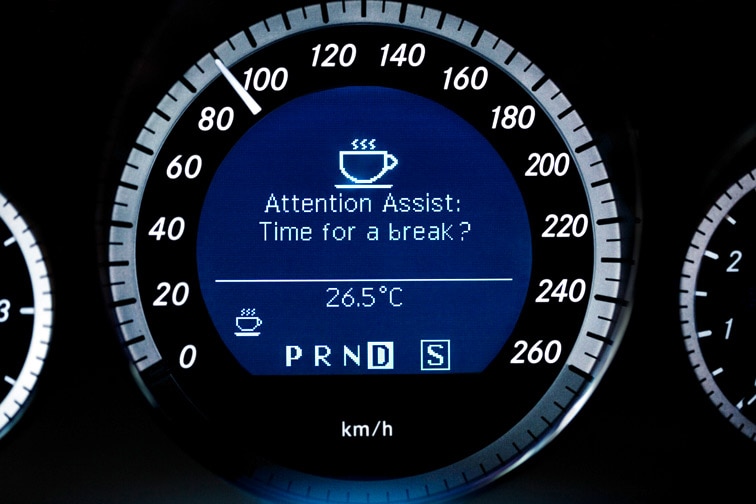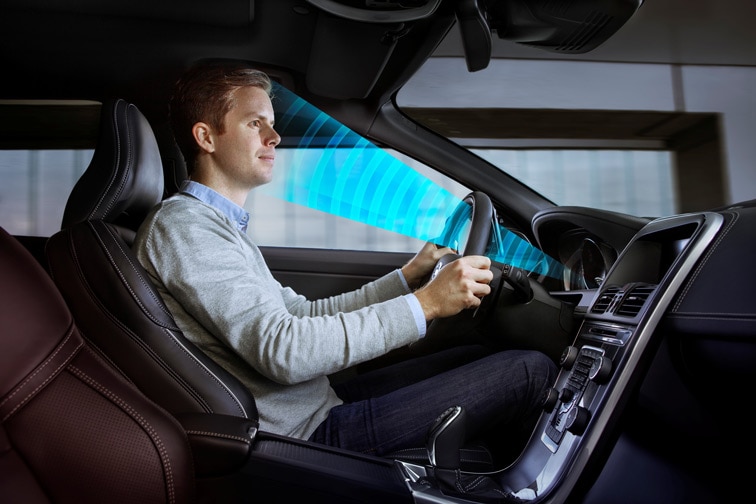Your Car Knows When You are Sleepy
Drowsiness detection systems can be vital to drivers, but they're among the many technological advances in modern vehicles that fly under the radar.
 Mercedes-Benz
Mercedes-Benz
Advances in automotive technology are coming faster than you can say George Jetson. But it’s not so easy keeping track of all the wondrous things our four-wheeled companions can do. A recent study by McKinsey & Company found that
Every year, manufacturers add sophisticated safety features and modern conveniences to new vehicles, such as lane keep assist, automatic emergency braking and cars that can park themselves. Some cars are so connected,
Some of these features can also be confusing and frustrating if you’re not sure how they work. So with that in mind, let’s take a closer look at some of the coolest capabilities in today’s cars, beginning with the fact that, like your own personal mechanized Santa Claus, your car knows when you are sleepy...while driving.
Luxury automakers Volvo and Mercedes introduced the safety feature about a decade ago, and now more than a dozen manufacturers offer drowsiness detection systems, all with slightly different names.
YES, CARS CAN TELL WHEN YOU’RE GETTING DROWSY
You’re driving late at night, or on a long road trip, and your eyelids are getting heavy. Next thing you know, your head bobs and you jerk back awake. This split-second nap is called a
Many drivers ignore those initial warning signs. A
Now, at least, your car can help reinforce the message that your brain is trying to send you.
 Volvo
Volvo
HOW DOES IT WORK?
There are essentially two ways your car can tell if you’re getting tired.
The most common one employs existing lane departure sensors and monitors steering inputs to detect erratic driving, like when you’re drifting out of your lane often in a short period of time. Some systems also learn your normal driving patterns and if they sense significant inconsistencies over a prolonged period of time, you will get an alert—a beep, a buzz, or even a coffee cup icon illuminated on your instrument panel.
A few manufacturers place a tiny camera on the steering column facing the driver to track eye and head movements. If it sees your head bobbing or eyelids drooping, it will trigger an alert.
This approach is likely to become more popular as vehicles move closer to autonomous driving and
WHAT ELSE SHOULD I KNOW?
- Some vehicles take their drowsiness detection a step further and engage the car’s GPS to suggest a nearby rest stop or coffee shop.
- Drowsiness detection has not yet become a standard feature on most vehicles, which means it is typically included in upgraded safety packages.
- Like all advanced driver assistance systems, it may occasionally think you’re drowsy when you’re not, based on your steering patterns.
The bottom line is that cars are getting smarter every minute, and, to some extent, they know your driving habits better than you do. So take advantage of that symbiotic relationship, and if your car suggests you need a cup of coffee to perk up, make it a venti.
Written by humans.
Edited by humans.
 Rick Press
Rick PressAfter a long career as an editor for a major metropolitan newspaper and website, in 2017 I joined Capital One as its Managing Editor for Auto Content. I’ve been fortunate to cover everything from breaking news and Super Bowls to CEOs and celebrities, and now I am excited to explore the connection we all have to our cars and help consumers navigate the car-buying journey. Let’s ride!
Related articles
View more related articles